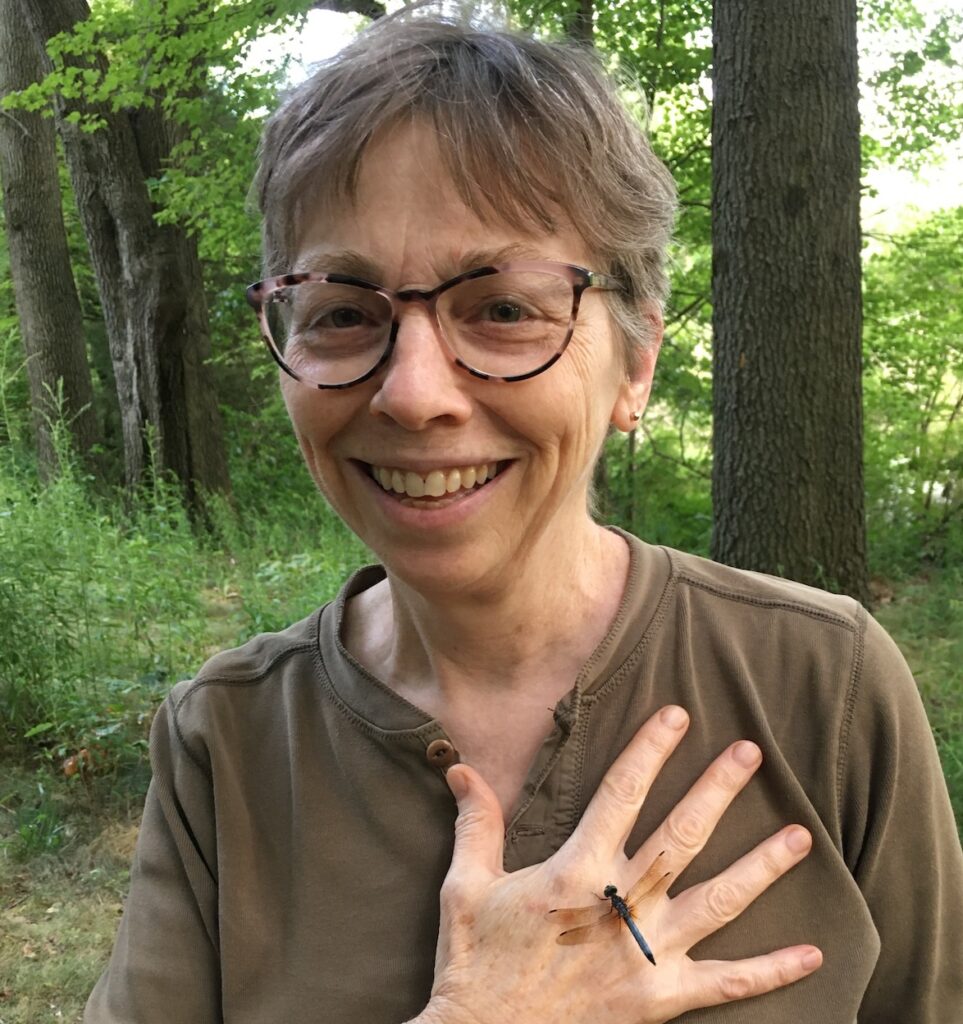GUEST BLOGGER BUFFY SILVERMAN
STARLIGHT SYMPHONY is a lyrical picture book that explores the sounds of animals gathered at a lake. As the sun sets, animals create a symphony under the stars. Each animal’s song or call is compared to a musical instrument, and the animal sounds are described with onomatopoeia. Back matter includes more about the behavior and communication of each featured animal, and about how each musical instrument produces sound.
What is onomatopoeia?
Explain to your students that you will be reading a book that uses words to describe different animal sounds. Students might enjoy learning and repeating the word onomatopoeia, which means the use of words to describe a specific sound. Ask students for examples of onomatopoeia. Some answers might include boom, bark, hiss, honk, clang, pop, and clap. You can encourage their thinking by rapping on a desk and asking what words describe that sound.
Tell students to listen for the animal sounds as you read STARLIGHT SYMPHONY. Pause and let students repeat each animal sound.
What do animal communicate with their sounds?
Ask students what messages animal sounds can communicate. Choose a few of the students’ favorite animals from the book, and read more about how these animals communicate in the section of back matter entitled “Meet the Musicians.”. You might also wish to read the corresponding section in “Meet the Musical Instruments.”
Take a sound walk!
Tell your students that they are going to gather sounds outside. Each student will need a clipboard, paper, and pencil to record what they hear. Alternatively, bring one clipboard and record a class list of all the sounds that students hear. Have the students draw three columns with headers as follows:
| Sounds I hear | Words to describe the sound | What the sound means |
Walk to a spot on your playground near trees or bushes, or to a nearby park or garden. Ask students to close their eyes and listen carefully for about a minute. Let students report what they have heard. Their answers might include leaves rustling, birds singing, insects calling, cars driving, footsteps, planes, and balls bouncing. Give students time to record their responses in the chart, or write their responses in one chart for the class. Walk to another spot and have students close their eyes and listen again for a minute or two. Challenge students to list sounds that they did not previously record, and to think of new words to describe sounds that they had previously heard. Let students share some of their sound descriptions and what they think these sounds mean.
Write a sound story
Ask students to write a story that includes some of the sounds they heard on the listening walk. Encourage them to use the information they included in their charts, especially the words that describe the sounds. They can also include sound words from STARLIGHT SYMPHONY. Challenge them to use a variety of soft sounds and loud sounds to add interest to their story. If students need a prompt to begin their stories, offer the following:
I stand under a tall tree and listen. Rustle, rustle….
Featured image credit: “Tweet!” by id-iom is licensed under CC BY-NC 2.0.
Buffy Silverman is the author of many nonfiction books for children, featuring topics from Angel Sharks to Alligators, and Mars to Monster Trucks. STARLIGHT SYMPHONY, her most recent book, received starred reviews from Kirkus and Booklist. Her books have earned honors from the NCTE Notable Poetry list, the CLA/NCTE Notable Book in the Language Arts, and Bank Street Best Books. She lives near a swampy lake where she enjoys outdoor time with her dog, photographing nature, and writing poetry. Visit her website at https://buffysilverman.com/ or follow her on bluesky social at @buffysilverman.bsky.social.













1 Comment
Leave your reply.